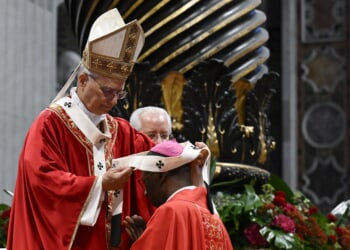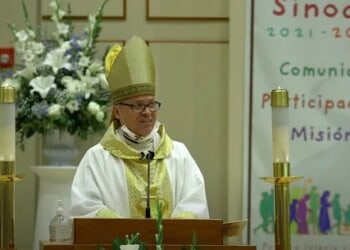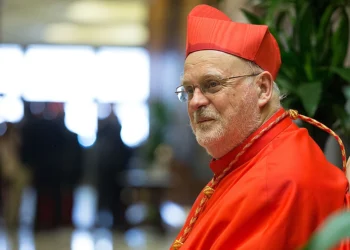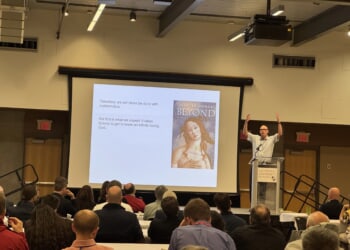It was a bittersweet day for The Cobra. In Cooperstown yesterday, the great Dave Parker, known as “The Cobra,” whose terrific 19-year career was highlighted by his remarkable decade-plus with the Pittsburgh Pirates, was inducted into Major League Baseball’s Hall of Fame.
But alas, Parker was not there for the grand ceremony. He passed away four weeks ago at age 74 after a long period suffering from Parkinson’s disease.
Dave Parker long deserved to make the Hall of Fame, but he didn’t get the nod from the Veterans Committee until his final months of life.
Personally, it’s hard for me to imagine Dave Parker being weakened by anything. My first glimpse of him in person came during a summer 1975 game between the slugging Pittsburgh Pirates’ “Lumber Company” and the awesome Cincinnati Reds’ “Big Red Machine.” Those were two powerhouses. Between 1970-79, each team won six division championships, more than any other franchise.
The Reds were simply incredible. I can still name every position player. There was Johnny Bench at catcher, Tony Perez at first base, Joe Morgan at second, Davey Concepcion at shortstop, Pete Rose at third, and an outfield of George Foster, Cesar Geronimo, and Ken Griffey Sr. It’s hard to name any standout Cinci pitchers. They didn’t need pitching. With that roster of All Stars and future Hall of Famers, a Little Leaguer could have taken the mound.
As for the Pirates, the Bucs served as bookends for that phenomenal decade of ’70s baseball by defeating the excellent Baltimore Orioles in both the 1971 and 1979 World Series. Arguably, the best of the Pirates’ teams of the decade were in the mid-1970s, but they couldn’t get past the Big Red Machine.
For Dave Parker, 1975 was the season he emerged. It was his third year. He hit 25 home runs, drove in 101 RBIs, and batted .308, the first of five consecutive years hitting over .300. The man could hit for power and average. He could smash 30 home runs and bat over .330, as he did in 1978, when he was awarded the National League’s MVP. He also had a cannon of an arm, and in 1979 made one of the most memorable throws in the history of the All-Star Game. He actually made two terrific throws in that game, which some believed solidified his case for Cooperstown.
Parker was arguably the best player in the game during that window, which is really saying something, given the intense competition. “He was the best player in the game from ’78 to the early ’80s,” says Keith Hernandez, who in 1979 shared the National League MVP award with Parker teammate Willie Stargell. “I can only speak for myself, but he was the best player in the game.”
Parker was an imposing physical presence. He stood at 6-foot-5 and weighed 230. His distinctive batting stance was striking, the kind that kids imitated, as they did for fellow Cooperstown teammate Stargell. Parker and Stargell both set balls soaring into the right-field bleachers at Three Rivers Stadium, above where Roberto Clemente played his final seasons.
That was where I was seated in the summer of 1975, an eight-year-old boy with my glove on my left hand waiting for a home run to land near us. But in truth, I was scared — at least when Dave Parker came to bat. Parker wielded a thin, long, dark black bat. And he wielded it in a most unique way. In the batter’s box awaiting a pitch, he pointed the bat straight up in the air, perfectly vertical, and sort of circled it — slightly, rhythmically, almost buzzingly — like the rattling of a cobra’s tail poised to strike. It was because of that stance that Pirates’ legendary broadcaster Bob “The Gunner” Prince began calling Parker “The Cobra.” (Parker himself said that it was Pirates’ beloved trainer Tony Bartirome who coined the nickname.)
As The Cobra came to bat, I hoped for a home run but also feared getting killed by a ball smoking into our row of seats at some unhuman speed. The glove was more like a shield to protect myself. Parker thus struck fear into fans and foes alike.
As did that Big Red Machine. Everyone of the ’70s era likewise remembers the batting stance of the magnificent Joe Morgan. Also a left-handed hitter, Morgan would repeatedly cock his left arm as he readied to pounce on a pitch. Like Parker, Morgan could hit for power and average and was an MVP.
The entire era of 1970s baseball was one of the greatest in the history of the sport. There were so many memorable if not epic teams, and it was probably the last era in which many fans of those teams could name almost every player in each position. That was certainly true of the wonderful 1975 Boston Red Sox squad that lost the World Series to the Reds in one of the most thrilling seven-game series ever. The Red Sox outfield was just awe-inspiring: Jim Rice, Fred Lynn, and Carl Yastremski. (Our Dan Flynn could no doubt rattle off every player on that team.)
Aside from the Red Sox and Reds and Pirates (and the forementioned Orioles), the Oakland A’s of the first half of the 1970s were downright amazing — until an unhinged madman of an owner tore the team to shreds. In fact, the A’s could make a legitimate claim for the title of best team of the decade. Also fielding fantastic rosters in that decade (though toward the end) were the Yankees, the Dodgers, the Phillies, and the Kansas City Royals.
The players on these teams were so memorable, which brings me back to Dave Parker, my focus and tribute here today.
In all, Parker would play 11 seasons with the Pirates before moving on to his hometown team, the rival Reds (ironically), for four years (posting terrific numbers in 1985). That was followed by two successful seasons with the A’s (including a nice 1989 campaign when they won the World Series), and several other teams before retiring in 1991. His career stats include 2,712 hits, 526 doubles, 339 home runs, 1,493 RBI, and a lifetime batting average of .290. Impressive.
Dave Parker long deserved to make the Hall of Fame, but he didn’t get the nod from the Veterans Committee until his final months of life.
“I’m just glad that he did find out that he was going in,” said Al Oliver, another outstanding player from those Pirates team (who amassed 2,743 hits and a superb .303 lifetime batting average in his 18-year career). “The Hall of Fame needs to get on the ball. They’re putting Hall of Famers in there when they can’t enjoy it, when they’re in their 70s and 80s. It doesn’t take that long to figure out whether someone is a Hall of Famer.”
Count Dave Parker among them. He did not live to attend his induction ceremony in Cooperstown this past weekend. But hey, on the plus side, at least he lived to know he made it to the Hall.
May David Gene Parker, a.k.a., “The Cobra,” rest in peace.
READ MORE from Paul Kengor:
Mark Levin’s On Power Packs a Powerful Punch
Bobby and Connie: A 1950s Romeo and Juliet
Butler: The Riveting Untold Story of the Shooting of Donald Trump


![Former Bravo Star Charged After Violent Assault Using a Rock-Filled Sock in Tennessee Walmart [WATCH]](https://www.right2024.com/wp-content/uploads/2025/07/Former-Bravo-Star-Charged-After-Violent-Assault-Using-a-Rock-Filled-350x250.jpg)



![NYC Man Snatches Child Off The Sidewalk, Parents Chase Him Down [WATCH]](https://www.right2024.com/wp-content/uploads/2025/07/NYC-Man-Snatches-Child-Off-The-Sidewalk-Parents-Chase-Him-350x250.jpg)
![Karoline Leavitt Levels CNN's Kaitlan Collins and Other Legacy Media Reporters [WATCH]](https://www.right2024.com/wp-content/uploads/2025/07/Karoline-Leavitt-Levels-CNNs-Kaitlan-Collins-and-Other-Legacy-Media-350x250.jpg)
![Man Arrested After Screaming at Senators During Big Beautiful Bill Debate [WATCH]](https://www.right2024.com/wp-content/uploads/2025/06/Man-Arrested-After-Screaming-at-Senators-During-Big-Beautiful-Bill-350x250.jpg)

![Leftists Lose Their Minds After Jason Kelce Celebrates Being an American [WATCH]](https://www.right2024.com/wp-content/uploads/2025/07/Leftists-Lose-Their-Minds-After-Jason-Kelce-Celebrates-Being-an-350x250.jpg)





